Rear Disc Brake Pads Replacement 15 Series Pickup
Removal Procedure
- Remove 2/3 of the brake fluid from the master cylinder.
- Raise and support the vehicle. Refer to
Lifting and Jacking the Vehicle
in General Information.
- Remove the tire and wheel assembly. Refer to
Tire and Wheel Removal and Installation
in Tires and Wheels.
- Inspect the caliper operation. Refer to
Brake Caliper Inspection
.
- Remove the caliper. Refer to
Rear Brake Caliper Replacement
.
- Suspend the caliper from the frame with heavy gauge wire. Do not
allow the caliper to hang from the brake hose.
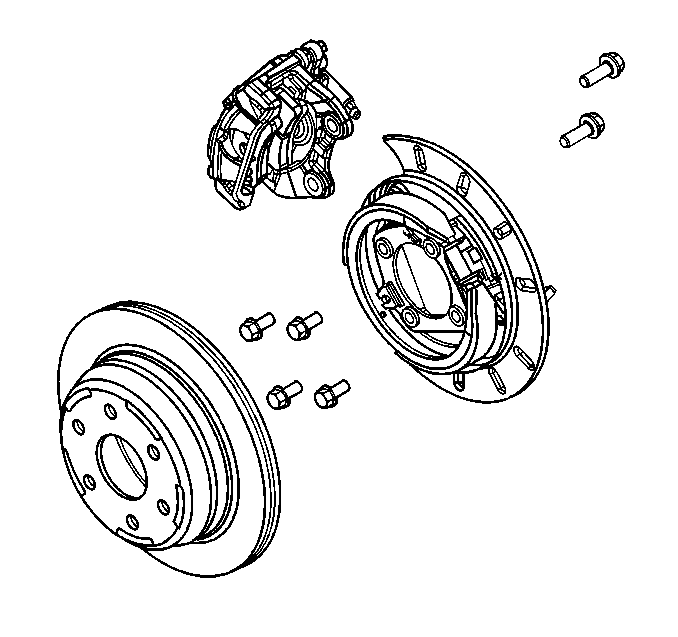
- Remove the caliper mounting
bracket bolts from the backing plate (15 series).

- Remove the caliper mounting
bracket bolts from the backing plate (25 series).
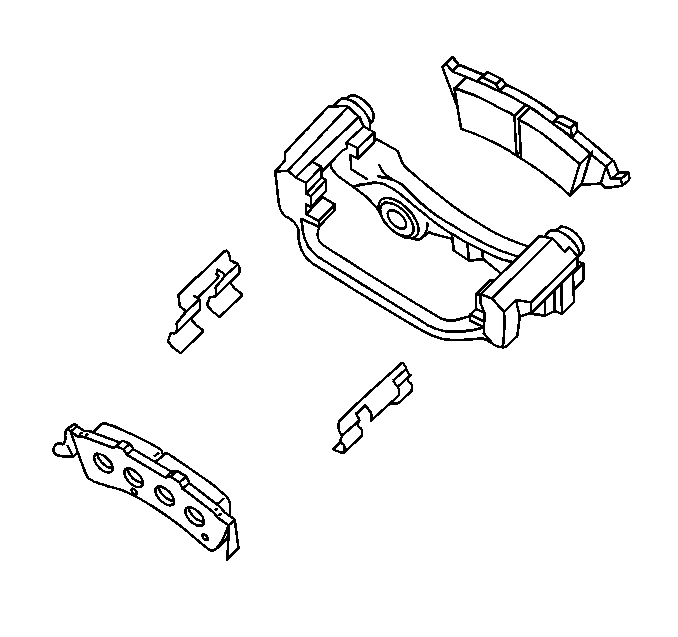
- Remove the brake pads
from the caliper mounting bracket (15 series).
- Remove the clips from the inside ends of the caliper mounting
bracket and discard.
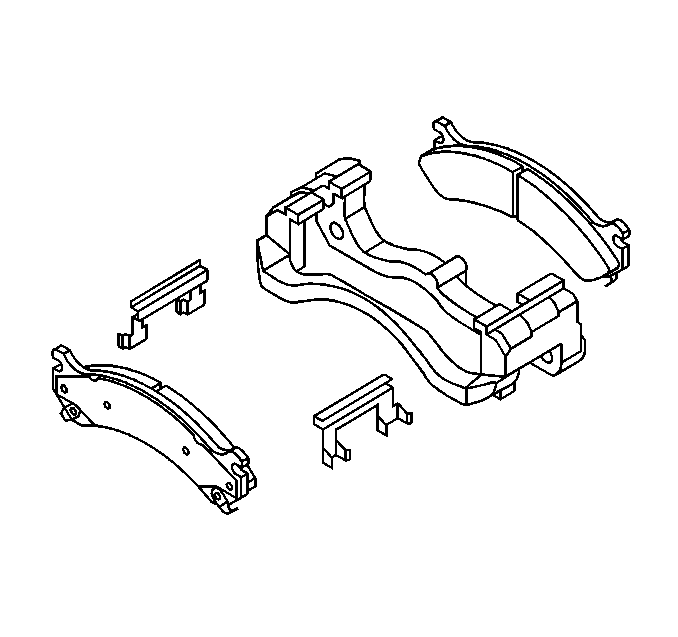
- Remove the brake pads
from the caliper mounting bracket (25 series).
- Remove the clips from the inside ends of the caliper mounting
bracket and discard.
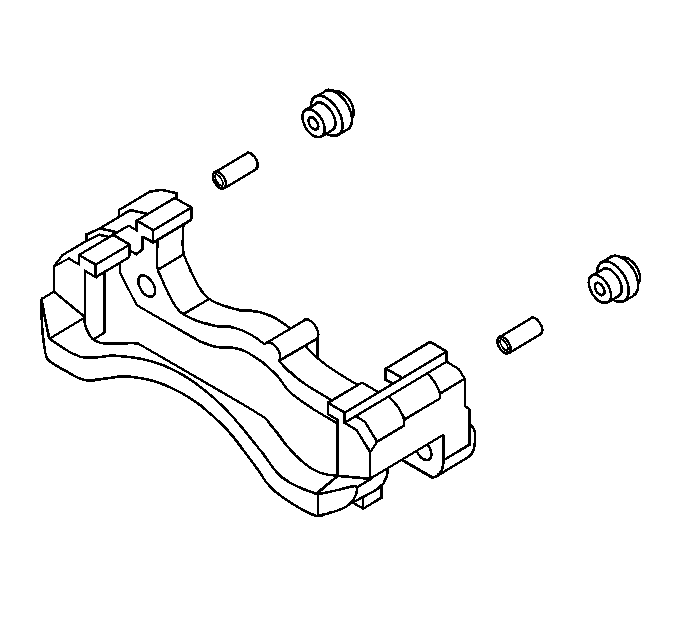
- Inspect the caliper and
mounting bracket. Refer to
Brake Caliper Inspection
.
Installation Procedure

- Install the clips to the
inside ends of the caliper mounting bracket.
- Install the brake pads to the caliper mounting bracket (15 series).
| • | Install the inner pad (1 wear indicator). |
| • | Install the outer pad (2 wear indicators). |

- Install the clips to the
inside ends of the caliper mounting bracket.
- Install the brake pads to the caliper mounting bracket (25 series).
| • | Install the inner pad (1 wear indicator). |
| • | Install the outer pad (2 wear indicators). |

- Install the caliper mounting
bracket to the backing plate assembly (15 series).

- Install the caliper mounting
bracket to the backing plate assembly (25 series).
- Perform the following procedure before installing the caliper
mounting bracket bolts.
| 7.1. | Remove all traces of the original adhesive patch. |
| 7.2. | Clean the threads of the bolt with brake parts cleaner or the
equivalent and allow to dry. |
| 7.3. | Apply Threadlocker GM P/N 12345493 or Red LOCTITE™ #272
to the threads of the bolt. |
Notice: Use the correct fastener in the correct location. Replacement fasteners
must be the correct part number for that application. Fasteners requiring
replacement or fasteners requiring the use of thread locking compound or sealant
are identified in the service procedure. Do not use paints, lubricants, or
corrosion inhibitors on fasteners or fastener joint surfaces unless specified.
These coatings affect fastener torque and joint clamping force and may damage
the fastener. Use the correct tightening sequence and specifications when
installing fasteners in order to avoid damage to parts and systems.
- Install the caliper
mounting bracket bolts to the steering knuckle.
Tighten
| • | Tighten the brake caliper mounting bracket to 200 N·m
(148 lb ft) (15 series). |
| • | Tighten the brake caliper mounting bracket to 165 N·m
(122 lb ft) (25 series). |
- Install the caliper. Refer to
Rear Brake Caliper Replacement
.
- Remove the tire and wheel assembly. Refer to
Tire and Wheel Removal and Installation
in Tires and Wheels.
- Remove the safety stands.
- Lower the vehicle.
- Refill the master cylinder to the proper level with fresh brake
fluid.
- Pump the brake pedal slowly and firmly in order to seat the brake
pads.
- Burnish the brakes as needed. Refer to
Brake Pad and Rotor Burnishing
.
Rear Disc Brake Pads Replacement Except 15 Series Pickup
Removal Procedure
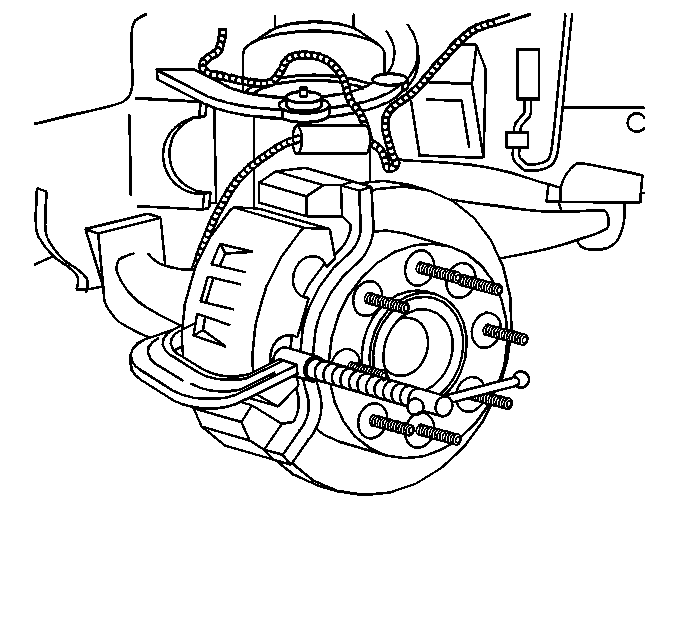
- Inspect
the fluid level in the brake master cylinder reservoir.
- If the brake fluid level is midway between the maximum--full point
and the minimum allowable level, no brake fluid needs to be removed from the reservoir
before proceeding.
- If the brake fluid level is higher than midway between the maximum-full
point and the minimum allowable level, remove brake fluid to the midway point before
proceeding.
- Raise and support the vehicle. Refer to
Lifting and Jacking the Vehicle
in General Information.
- Remove the tire and wheel assembly. Refer to
Tire and Wheel Removal and Installation
in Tires and Wheels.
- Inspect the caliper operation. Refer to
Brake Caliper Inspection
.
Notice: Support the brake caliper with heavy mechanic wire, or equivalent,
whenever it is separated from its mount and the hydraulic flexible brake hose is still connected. Failure to support the caliper in this manner will cause the flexible brake hose to bear the weight of the caliper, which may cause damage to the brake hose and
in turn may cause a brake fluid leak.
- Remove the caliper from the mounting bracket and support the caliper with
heavy mechanic's wire or equivalent. DO NOT disconnect the hydraulic brake flexible
hose from the caliper. Refer to
Front Brake Caliper Replacement
.
- Inspect the caliper assembly. Refer to
Brake Caliper Inspection
.

- Remove
the brake pads from the brake caliper bracket.
- Remove and discard the anti-rattle clips from the brake caliper mounting
bracket.
Installation Procedure
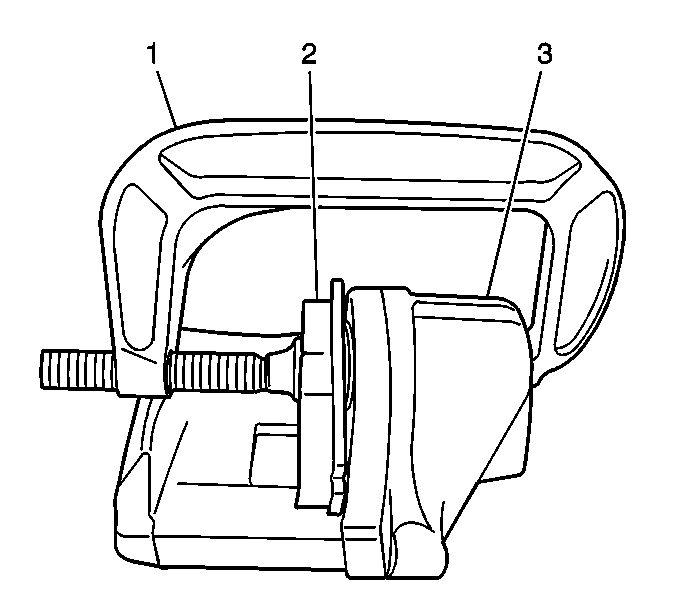
- Using a C-clamp, bottom the piston into
the caliper bore. Use an old brake pad or wooden block placed across the face of
the piston. Do not damage the piston or the caliper boot.

- Install
the anti-rattle clips to the brake caliper bracket.
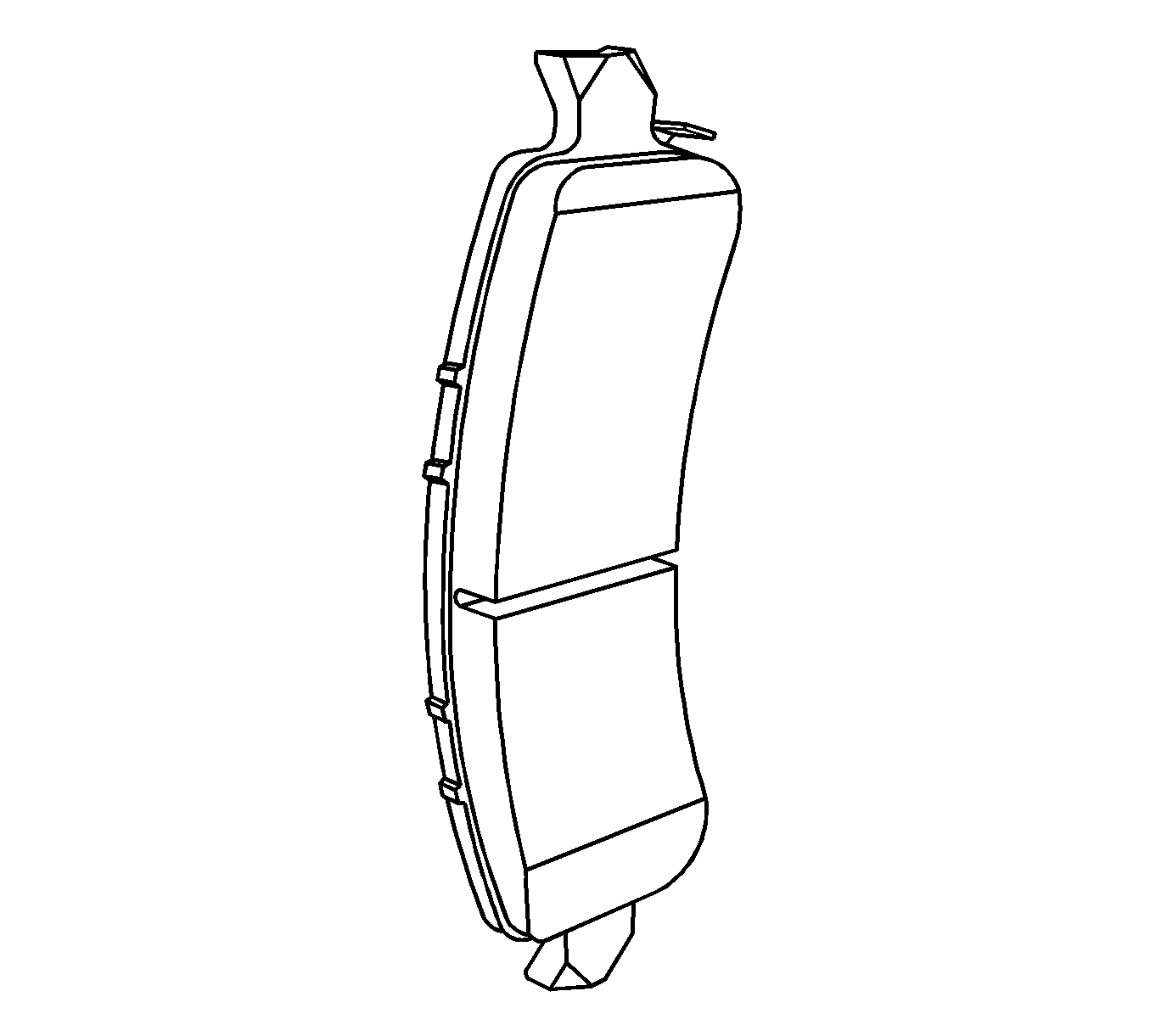
Important: Proper orientation of the brake pads is critical
for proper pad wear.
- If working on a 2WD 1500 series utility, install the inboard rear
pad to the brake caliper bracket with the longer pad end chamfer facing down. For
all other trucks, install the brake pads to the brake caliper.
- Install the brake caliper to the mounting bracket using NEW bolts. Refer
to
Rear Brake Caliper Replacement
.
- Install the tire and wheel assembly. Refer to
Tire and Wheel Removal and Installation
in Tires and Wheels.
- Remove the safety stands.
- Lower the vehicle.
- With the engine OFF, gradually apply the brake pedal to approximately 2/3
of it's travel distance.
- Slowly release the brake pedal.
- Wait 15 seconds, then repeat steps 8-9 until a firm
pedal is obtained. This will properly seat the brake caliper pistons and brake pads.
- Fill the master cylinder reservoir to the proper level with clean brake
fluid. Refer to
Master Cylinder Reservoir Filling
in Hydraulic Brakes.
- Burnish the brakes pads and rotors as necessary. Refer to
Brake Pad and Rotor Burnishing
.














